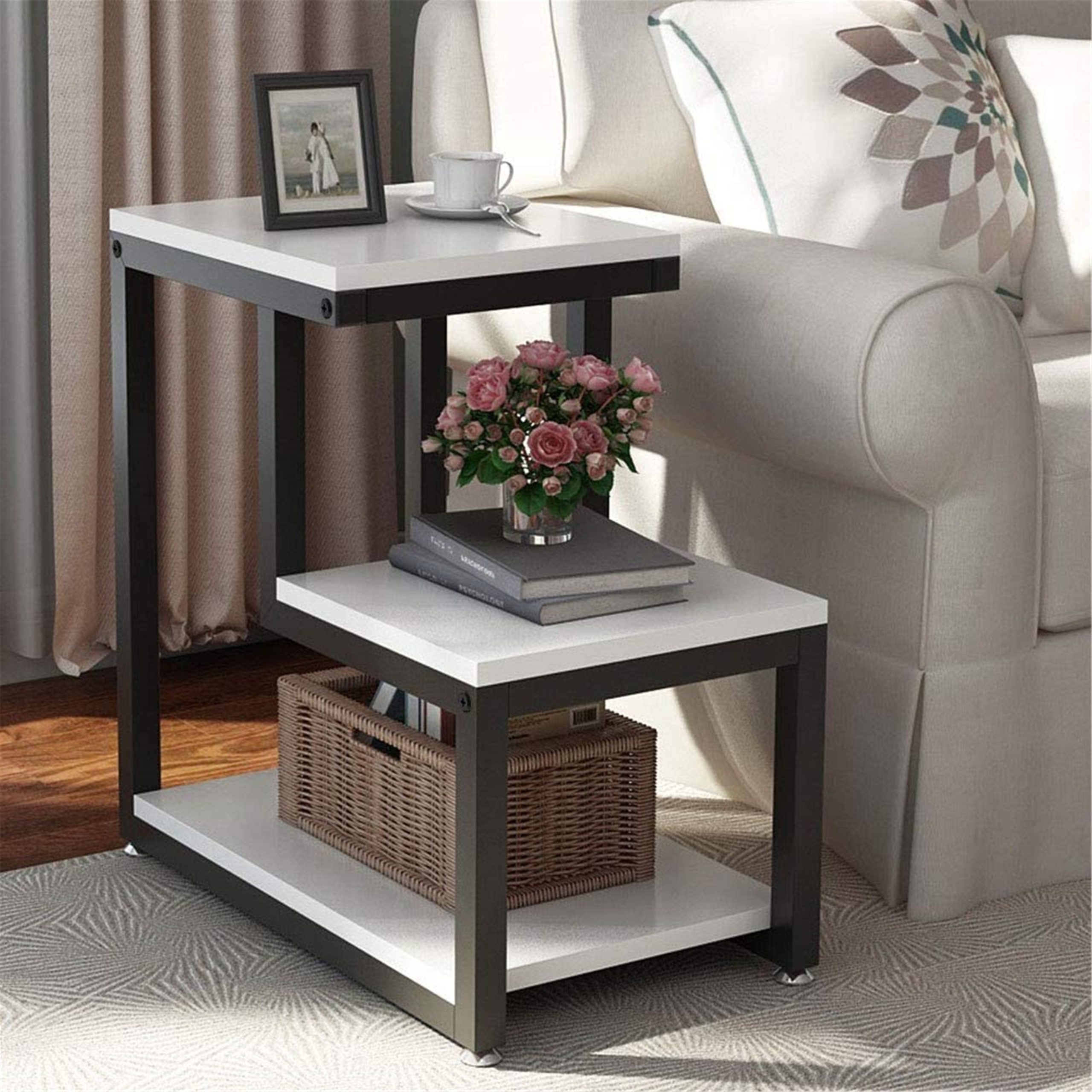Side tables: they might seem like minor players in the living room furniture game, but these versatile pieces can significantly impact your space. From showcasing cherished belongings to keeping essentials within arm’s reach, the right side table can elevate your living room from ordinary to extraordinary. This comprehensive guide explores everything you need to know to choose the perfect side table for your needs and style.
Enhancing Your Living Room with Side Tables
Side tables are the unsung heroes of comfort and style. They’re more than just surfaces for drinks; they’re essential elements that can truly elevate your living space. This guide will help you find the perfect side table companions for your sofa and armchairs.
Practicality and Function
Consider how you use your living room. Do you need a spot for remotes, books, or a reading lamp? Perhaps a place to charge your phone or set down your coffee mug? A side table caters to all these needs, and choosing the right one begins with considering its function. Size is crucial – avoid a table that overwhelms the space or one so tiny it’s practically useless. Consider the height, too. Ideally, it should be roughly the same height as your sofa’s armrest or slightly lower.
For smaller rooms, space-saving is key. C-shaped tables are a fantastic option, sliding under your sofa to provide a surface without consuming precious floor space. Nesting tables offer flexibility and extra surface area when needed.
Material choice matters. Wood brings warmth and character, while metal offers a sleek, modern vibe. Glass can make a small room feel larger and is easy to clean. Consider durability as well. If your household is prone to spills or bumps, a sturdy wood or metal table might be a better choice than glass.
Defining Your Style
Your side tables, like any other furniture, should reflect your personal style. Whether you prefer modern minimalism or cozy rustic charm, there’s a side table out there to complete your look.
- Modern: Clean lines, simple shapes, and materials like metal, glass, or sleek wood define modern elegance.
- Rustic: Natural wood, distressed finishes, and a touch of imperfection give rustic tables a warm, inviting feel.
- Traditional: Ornate details, classic shapes, and rich wood tones characterize traditional side tables, adding timeless elegance.
- Contemporary: This style blends elements from different eras for a fresh, modern look, often incorporating mixed materials and unique finishes.
- Mid-Century Modern: Retro vibes, tapered legs, sleek profiles, and a focus on functionality define this resurgent style.
Budgeting for Your Side Table
Finding the perfect side table doesn’t have to break the bank. Options exist for every budget.
- Budget-Friendly: Retailers like Walmart, Target, and online marketplaces offer a wide selection of inexpensive side tables.
- Mid-Range: Stores like Ashley Furniture, Bed Bath & Beyond, and IKEA offer a balance of quality and affordability.
- High-End: For premium materials, unique designs, and heirloom-quality craftsmanship, explore higher-end furniture stores and online retailers.
Creative Touches and DIY
For a truly unique living room, consider a DIY side table project. Repurposing an old suitcase, a vintage crate, or even a stack of books adds a personal touch. Sustainability is also important. Look for eco-friendly materials like reclaimed wood or bamboo and choose brands with sustainable practices.
Don’t forget the finishing touches! A stylish lamp, a few well-placed books, a small plant, or a decorative object can transform your side table. Experiment with arrangements to find what works best. Looking for a stylish and functional way to display your favorite books and decor? Check out our extensive selection of living room shelves and living room bookshelves. With a variety of styles and finishes to choose from, you’re sure to find the perfect piece to complement your home. Remember, your living room should reflect your personality, so have fun with it!
Decoding Living Room Table Terminology
Those handy little tables next to your sofa or armchair are most commonly called side tables. But they have a few other names, too. They’re often called end tables, likely due to their placement at the end of a sofa or beside a chair. Accent tables are more decorative, adding a pop of personality with interesting materials and shapes. You might also encounter broader terms like occasional tables (used for specific occasions) or lamp tables (designed to hold lamps). While these terms are often interchangeable, subtle differences may exist in size, style, and intended use.
| Table Name | Description |
|---|---|
| Side Table | General term for a small table placed next to seating |
| End Table | Essentially the same as a side table, often used at the end of a sofa or beside a chair |
| Accent Table | More decorative, focused on style and adding a visual element to the room |
| Occasional Table | Broader term, encompassing various small tables used for specific occasions or needs |
| Lamp Table | Small table designed to hold a lamp |
Ultimately, the name you choose is less important than finding a table that suits your needs and style.
The Enduring Appeal of End Tables
End tables remain a living room staple. They provide a convenient spot for drinks, remotes, books, and more. Beyond practicality, they enhance style, introducing color, texture, and unique design elements. The sheer variety of styles, from sleek and modern to rustic and charming, contributes to their lasting popularity. This adaptability allows you to find the perfect end table to complement your living room’s décor.
Placement is key. While traditionally placed next to seating, end tables can also work in corners, flanking a fireplace, or as standalone accents. This versatility helps define zones in open-plan living areas. Some research even suggests that strategically placed end tables can make a room feel larger. In smaller living rooms, compact C-shaped or nesting tables offer functionality without consuming valuable floor space.
While the future of furniture in increasingly digital homes is a subject of debate, the end table’s core function as a convenient and stylish surface likely ensures its continued presence. We may see changes in materials, shapes, and integrated technology, but the basic need for a place to set down our belongings probably won’t disappear.
Mastering Side Table Proportions
Choosing the right size side table for your sofa impacts both the look and functionality of your living room.
Height
The ideal side table height is roughly the same as your sofa’s armrest, typically between 22 and 30 inches. This comfortable height keeps everything within easy reach.
Depth
The table’s depth should be equal to or slightly less than your sofa’s depth. This prevents a cramped feeling and maintains visual balance.
Surface Area
A rectangular table around 21 by 26 inches, or a round table with a diameter of 24 inches or less, typically works well. This provides sufficient surface area without overwhelming the space.
Additional Considerations
Consider your storage needs and sofa size. A larger sectional might benefit from a larger table or a pair of tables, while a loveseat might suit a smaller, more delicate option. Don’t be afraid to experiment to find what best complements your space.
- Does 100% Polyester Shrink? A Complete Guide to Washing & Drying - April 16, 2025
- Elegant Drapery Solutions for Arched Windows: A Complete Guide - April 16, 2025
- The Best Dining Room Tables with Drop Leaves: A Buyer’s Guide - April 16, 2025










